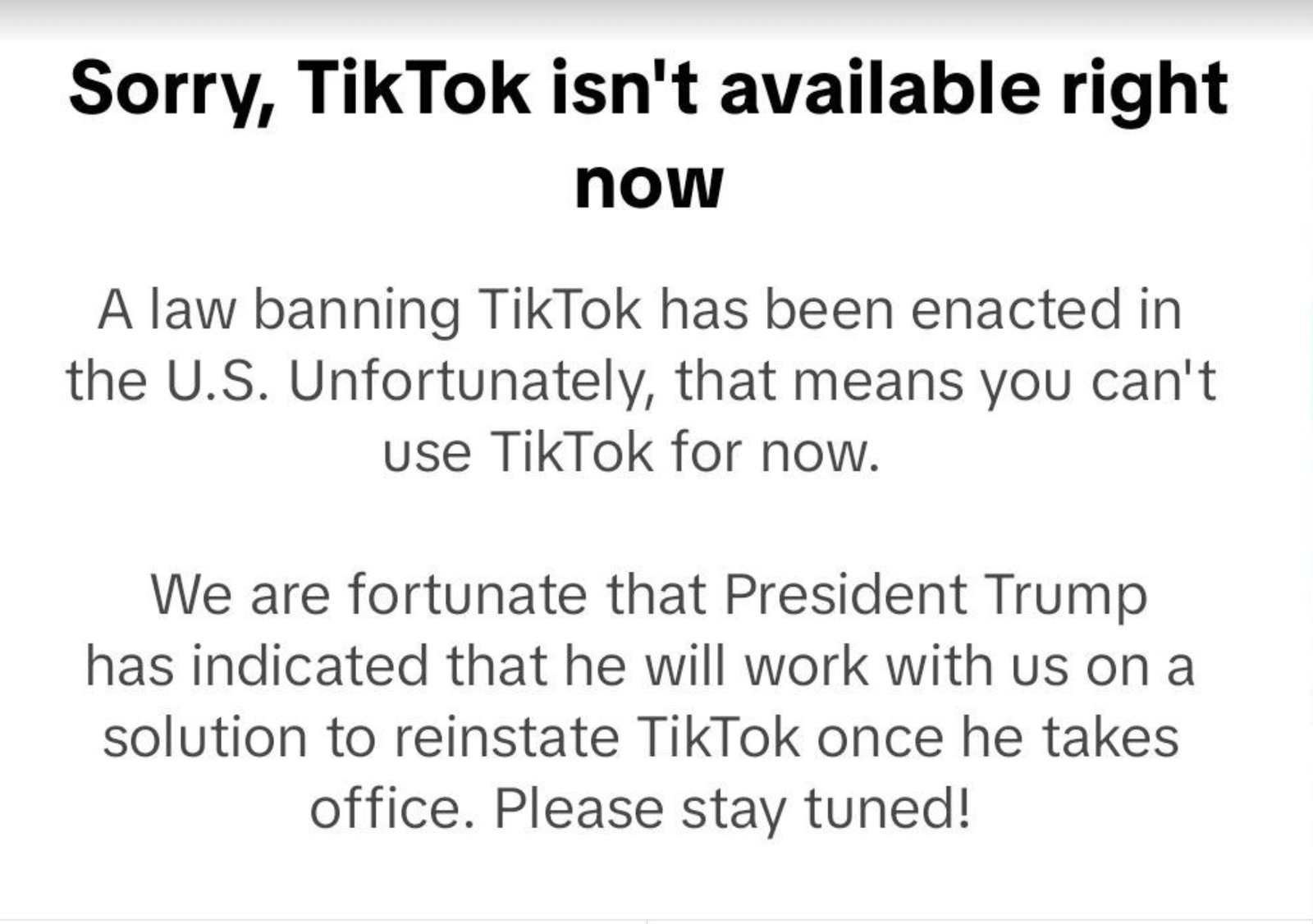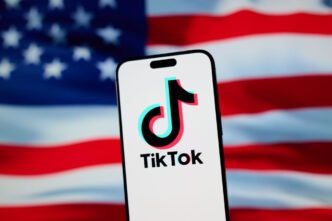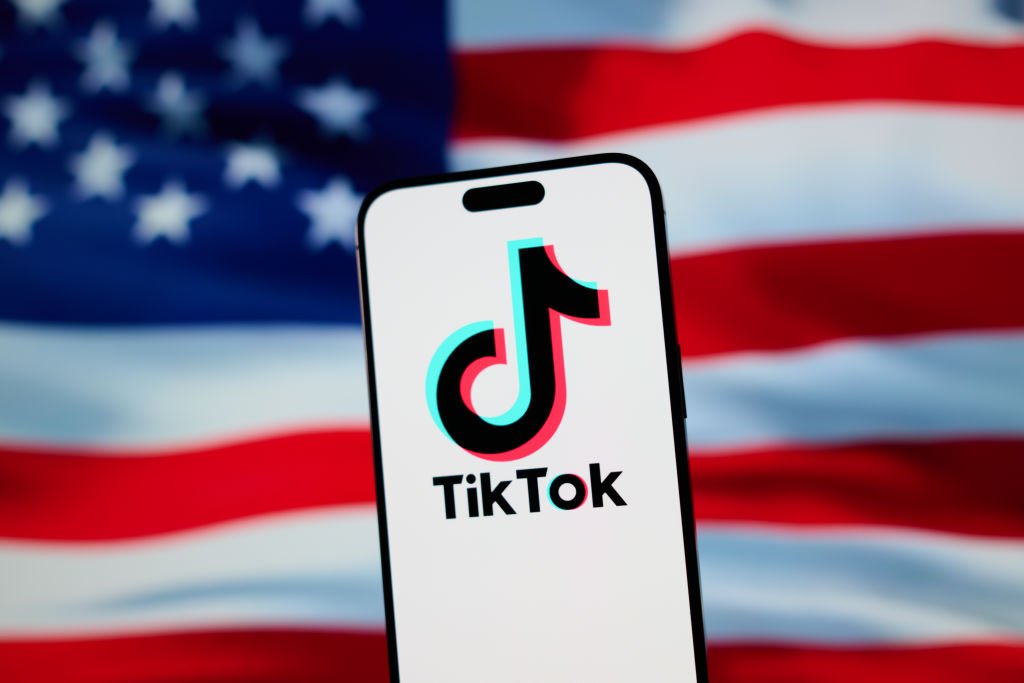TikTok, the immensely popular short-form video app, officially went dark in the United States following the enactment of a federal law banning its use. This move has left millions of Americans without access to one of their favorite platforms, while the app’s future hangs in uncertainty.
Let’s dive into the key developments, reasons behind the ban, and what lies ahead for TikTok and its users.
Why Did TikTok Go Dark?
On Friday evening, TikTok users started receiving a message stating:
“Sorry, TikTok isn’t available right now. A law banning TikTok has been enacted in the U.S. Unfortunately, that means you can’t use TikTok for now.”
The app was also removed from both the Apple App Store and Google Play Store. This abrupt shutdown is the result of a law passed in April 2024, requiring TikTok’s parent company, ByteDance, to either divest its U.S. operations or face a nationwide ban due to concerns over potential Chinese surveillance.
Timeline of Events Leading to the Ban
- April 2024: Bipartisan support in Congress led to the passage of a law mandating ByteDance to sell TikTok. President Joe Biden signed the bill swiftly.
- January 19, 2025: Deadline for the law’s enforcement, coinciding with the last day of Biden’s administration.
- January 16, 2025: Supreme Court upheld the law, solidifying the ban.
- January 17, 2025: TikTok preemptively went dark, citing a lack of definitive assurances from the Biden administration to prevent the ban.

The Role of ByteDance and U.S. Administrations
- Biden Administration: White House officials, including Press Secretary Karine Jean-Pierre, expressed that enforcing the law would be left to the incoming administration, terming TikTok’s pre-emptive shutdown a “stunt.”
- Trump Administration: President-elect Donald Trump hinted at a possible 90-day extension of the ban, offering some hope for TikTok’s reinstatement.
Concerns Over Chinese Surveillance
The primary reason for the ban is national security concerns. Lawmakers fear that ByteDance’s ownership of TikTok may allow the Chinese government to access U.S. user data or influence content. ByteDance has consistently denied these allegations but remains under scrutiny.
The Future of TikTok in the U.S.
Trump’s Potential Actions
President-elect Trump has suggested he will negotiate a resolution, which could include:
- Extending TikTok’s deadline by 90 days.
- Forcing ByteDance to divest TikTok’s U.S. operations.
Potential Buyers and Alternatives
Numerous entities have expressed interest in acquiring TikTok or finding a solution:
- Perplexity AI: Proposed a merger to integrate TikTok’s video capabilities into its AI search platform.
- Frank McCourt: Presented a “people’s bid” to take control of TikTok.
- Chinese Government: Rumored to consider a deal involving Elon Musk, though ByteDance labeled this report as “pure fiction.”
Meanwhile, alternative apps like RedNote and Lemon8 have gained traction as users search for replacements.
Impact on Users
TikTok boasts 170 million users in the U.S., making its absence a significant cultural and economic loss. Many creators and small businesses rely on TikTok for exposure and revenue.
Key Statistics
| Metric | Details |
|---|---|
| Active U.S. Users | 170 million |
| Potential Economic Impact | Billions in lost revenue for creators, brands |
| Popular Alternatives | RedNote, Lemon8 |
What’s Next for TikTok Users?
TikTok’s message to its users hints at optimism:
“Stay tuned! President-elect Trump has indicated he will work with us on a solution to reinstate TikTok.”
Until then, creators and users are exploring other platforms or waiting for official updates.
Key Takeaways
- TikTok’s shutdown in the U.S. is rooted in national security concerns over ByteDance’s ownership.
- A new administration under President Trump may explore options to extend or resolve the ban.
- The app’s long-term future remains uncertain, with mergers or divestitures likely scenarios.
TikTok may be gone for now, but its story is far from over. Stay tuned for what’s next in the evolving landscape of social media and tech regulation.
Also













